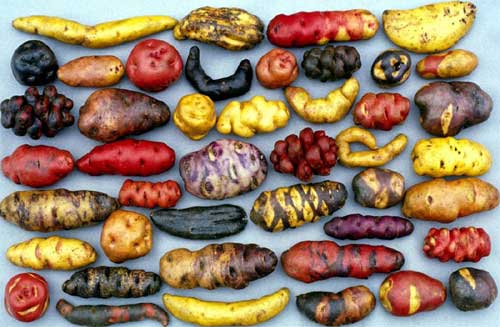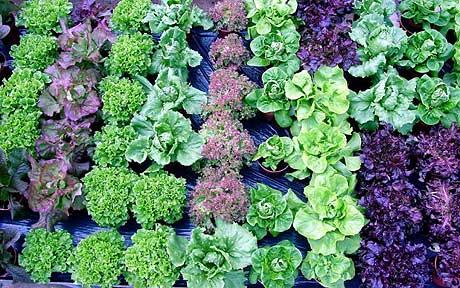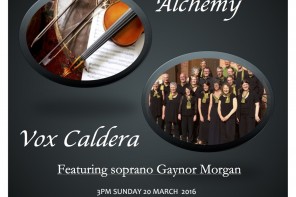Robert Drewe discovers that one man’s Kipfler is another man’s Red Rascal, that Iceberg lettuces are out of fashion, and that the local markets are places of wonder…
You say potato, I say Kipfler. Or maybe Bintje, or Red Rascal, or Dutch Cream, or Pink Eye, or any of the other eighteen varieties of spuds now available in Australia. You say tomato, and I won’t even begin to describe the many types you can buy nowadays.
There are fifty of them, from the Amish Paste and Apollo to the Tiny Tim and Tommy Toe. And they’re not necessarily red either. Non-red tomatoes? What’s going on? They might be yellow, green, orange, pink, chocolate, even black. And they mightn’t be round shaped. They could resemble flattened eggs or pears or be as small as cherries. Or they might be bigger than softballs. Some tomatoes (the Green Zebra) are even striped.
I’m a weekly visitor to either the Bangalow or Byron Bay markets, places of wonder whose choices make your head spin. For example, it seems only yesterday that a single variety of potato existed. It was round, brown and dusty, but perfectly suited to either mashing or baking, chipping or boiling, and you bought it in bags weighing one stone (6.35 kg), much of which was encrusted dirt. It had a name. We called it a “potato”. Now, potatoes are washed and brushed and custom-grown for a particular cooking process.
Remember when we ate one variety of tomato? A “tomato” it was called. And guess how many types of lettuce there were? One — it was called a “lettuce”. As for carrots, well, you get the picture.
Carrots today? Would you prefer a Stefano, a Navarre, a Red Hot or a Cellobunch? Perhaps the Condor, Red Brigade, Red Count or Red Sabre would better suit your taste? Western Reds are popular, as are Majestic Reds.
The Royal Chantenay variety, I learned from the website of the World Carrot Museum (motto: “Discover the Power of Carrots”) is “wide-shouldered and highly tapered, with good internal colour”. It sounds like pretentious wine-speak. Thankfully, as far as I can see, carrots have remained orange.
How about the humble lettuce of yesteryear? The staple of our salads (always lavishly smothered with mother’s mayonnaise made of Nestles condensed milk, Keen’s mustard and vinegar), has been revealed nowadays as an Iceberg. Alas, the crunchy and often shredded Iceberg has long been overwhelmed by its fashionable cousins: the Butter, the Red Butter, the Cos, the Baby Cos, the Red Oak, the Green Oak, the Red Coral, the Green Coral and the Mignonette.
If it’s still a mainstay in sandwich shops, the Iceberg has long been elbowed off the restaurant plate by those more stylish salad greens: the endive, radicchio, rocket, witlof and watercress.
Incidentally, for all its many varieties and colours, the tomato is strangely absent from the traditional Aussie salad. Sadly, one day it just disappeared. Maybe it was seen to have design flaws. Like the poor Iceberg, it was suddenly shunned by smart diners as out-of-date, surfacing apologetically as an Italian or Greek peasant-style side dish.
Fruit is another sad story for me. Strawberries aren’t what they used to be: smaller and sweeter. Yes, there are plenty of apple varieties around, some of the recent types, like the Pink Lady, the Jazz and the Sundowner, even trademarked. Granny Smiths are still hanging in there, but try buying the crispest, sharpest apple of all, the Jonathan.
According to the Aussie Apples website, “The Jonathan is an old-fashioned eating apple favoured by many mature Australians who treasure their crisp, juicy flesh and tangy flavour.” (“Old-fashioned”, “mature”: that’s damning with faint praise.) So most orchardists have given up on them.
Produce now has to meet the glossy appearance and storage standards of the supermarkets; taste seems secondary. Food is more brightly coloured. Grey used to be a meal’s standard shade. Recalling the dinners of my childhood (known as “tea”), all lovingly prepared and relentlessly overcooked (“well done” in the 1950s and 60s Anglo-Australian style), tough grey lamb and grey beef spring to mind.
I especially remember my mother’s grey Brussels sprouts, and grey beans that after ten minutes’ chewing turned to strings of sisal in a child’s mouth. The Aztecs could have woven rugs from them.
No longer. Today’s veggies might be flashier but there’s a bonus – at least you can swallow them. For freshness and taste, however, buy them from the markets.
Robert Drewe’s latest books, The Local Wildlife and Swimming to the Moon, are now in bookshops.







